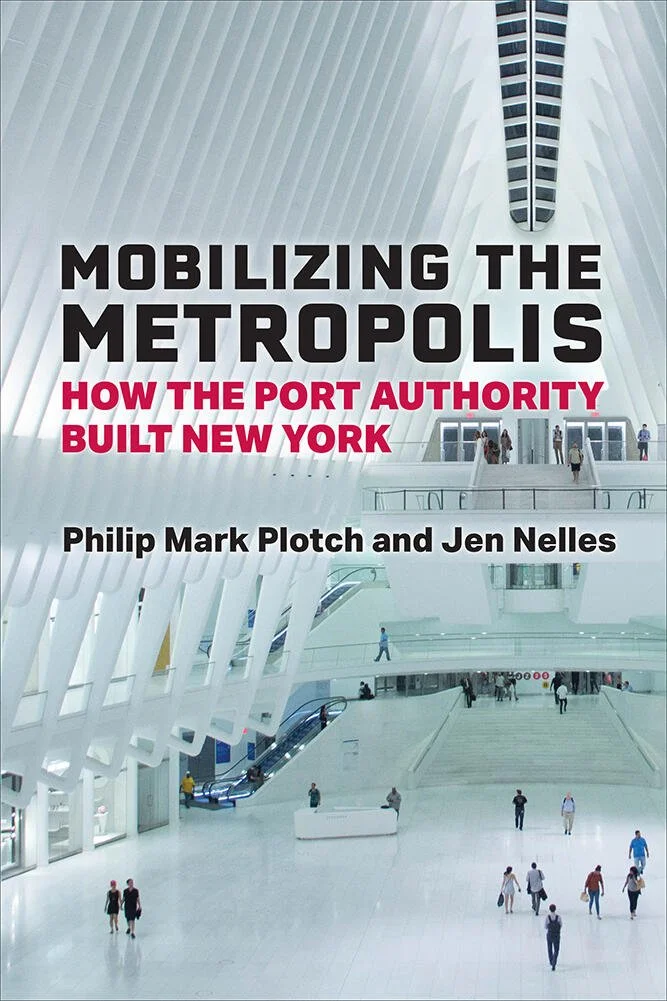Mobilizing the Metropolis: How the Port Authority Built New York
Review by Elizabeth M. Marcello and Gail Radford
The New York City metropolitan area boasts an impressive infrastructural network that moves people, trains, motor vehicles, freight, ships, and airplanes. At the center of this network is the Port Authority of New York and New Jersey, the subject of Philip Mark Plotch and Jen Nelles’s Mobilizing the Metropolis, which they offer as a “reflective history” of this particular agency, but also as a series of “lessons” for other agencies around the country built on the public authority model.
Read MoreAbraham E. Kazan
By Glyn Robbins
Kazan’s efforts, combined with the power of the city’s labor movement and astute political alliance making, led to the building of 40,000 homes for working class New Yorkers. At a time when The Housing Question has rarely been more pressing than since Frederick Engels first raised it in 1872, recognising Kazan’s legacy is important. He successfully developed a model that worked: an alternative to the brutality of the housing market that, despite many challenges, has endured.
Read MoreThe Battle Nearer to Home: The Persistence of School Segregation in New York City
Review by Erika Kitzmiller
Despite its global reputation as a proudly diverse and progressive city, New York City public schools remain deeply segregated and inequitable. Bonastia covers two periods in which officials considered and local residents pushed for integration: from Brown v. Board (1954) to the fiscal crisis of the mid-1970s and then from the early 2010s to the present. He asserts that he chose these two periods because they were the only times in recent history when there was any hope of enacting and implementing policies and programs to advance integration and equity.
Read MoreMaking Book on the Rez: A Hundred Years of Watershed Inquietude
Review by Gerard Koeppel
Lucy Sante’s Nineteen Reservoirs is an odd little book. “I would like simply to give an account of the human costs,” she concludes the Introduction, “an overview of the trade-offs, a summary of unintended consequences.”…Readers uninitiated in the history of New York’s water supply and watershed-dweller psychosis will find a useful if derivative primer.
Read MorePlacemaker and Displacer: How Transit Shaped New York
By Polly Desjarlais
Before 1950, a vibrant multi-ethnic, residential neighborhood known as Little Syria existed at the very bottom of Manhattan. A concentration of immigrants from Lebanon, Syria, Jordan, and Palestine (countries collectively known then as Greater Syria) settled on Lower Washington Street beginning in the 1880s… As in the case of Chinatown, the transit connections between Little Syria and Brooklyn became instrumental in the community’s transplantation and survival… nearly the whole neighborhood was razed in the 1940s to make way for the construction of the Brooklyn Battery Tunnel (Hugh L. Carey Tunnel). . . In the case of Little Syria, the city’s transportation demands both displaced people and provided a means of resettlement in other parts of the city.
Read MoreWorking Class Utopias": A History of Cooperative Housing in New York City and Freedomland: Co-op City and the Story of New York
Reviewed by Nicholas Dagen Bloom
To understand why local cooperatives rank so low in progressive housing discourse, it’s worth reading either of the excellent books under review. Annemarie Sammartino’s Freedomland provides a socially informed history of Co-op City, chronicling its triumphs and travails, with particular attention to resident experiences and long-term outcomes. Legendary urban history Robert M. Fogelson’s Working-Class Utopias offers readers a comprehensive account of the New York cooperative movement, giving special attention to the spectacular collapse of Co-op City’s finances during the 1975-76 rent strike. Both books capture the complexity, and nearly insuperable challenges, faced by cooperative sponsors, state officials, and residents in sustaining communal housing.
Read MoreNew Ways to Understand Robert Moses: An Interview with Katie Uva and Kara Murphy Schlichting
By Robert W. Snyder
If you teach courses on New York City’s history, or just have a passing interest in its past, you are sure to come across Robert A. Caro’s biography The Power Broker: Robert Moses and the Fall of New York. Published in 1974, it remains influential and informs an exhibit at the New-York Historical Society, echoes into David Hare’s new play Straight Line Crazy, and appears conspicuously in Zoom conversations on the bookshelves of politicians and journalists.
Read MoreBefore Central Park
Reviewed by Kara Murphy Schlichting
Before Central Park is Sara Cedar Miller’s fourth publication about New York City’s famous greensward. Miller is historian emerita and, since 1984, a photographer for the Central Park Conservancy. Before Central Park is distinctive in its combination of Miller’s photography, her expert understanding of the park’s geography and archeology, and her meticulous real estate history of parkland from the 17th through the 19th centuries.
Read More






